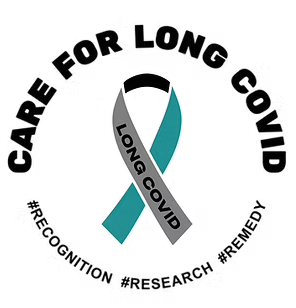Long COVID
Long COVID: What You Need to Know
Long COVID is an infection-associated chronic condition that occurs after SARS-CoV-2 infection (the virus that causes COVID-19). It is present for at least 3 months as a continuous, relapsing and remitting, or progressive disease state that affects one or more organ systems. In other words, while many people become infected with COVID-19 and recover within weeks, some continue to experience symptoms long-term or may develop new or recurring symptoms weeks or months after appearing to fully recover; this condition is referred to as Long COVID.
Long COVID can follow asymptomatic, mild, or severe COVID-19 infection. Previous infections may have been recognized or unrecognized. This means that you can develop Long COVID even if you never experienced symptoms after initially testing positive for COVID-19.
Common Symptoms and Conditions
Long COVID manifests as many different signs, symptoms, and diagnosable conditions and can affect any organ system in the body; in fact, patients (who are frequently referred to as long-haulers) often experience conditions that overlap across multiple systems. Long COVID can also exacerbate pre-existing health conditions. These factors make Long COVID particularly difficult to diagnose.
It would be impossible to list every sign, symptom, and condition associated with Long COVID—remember, these can often overlap. Patients can present with:
Physical symptoms and conditions, such as:
|
|
Behavioral symptoms and conditions, such as:
|
|
Who can Get Long COVID?
Long COVID does not discriminate. Long COVID can affect children and adults, regardless of health, disability, or socioeconomic status, age, sex, gender, sexual orientation, race, ethnicity, or geographic location.
However, social determinants of health that contribute to Long COVID inequities include:
- Economic stability: unemployment
- Health care access and quality: access to health care, rates of uninsurance, living in medically underserved areas
- Neighborhood/built environment: high density, congregate settings, lack of reliable transportation, jobs with higher exposure to COVID-19
Treatment
Long COVID is not one illness, so there is no laboratory test that can determine if you have it. A positive COVID-19 test is not required for a Long COVID diagnosis. Your healthcare provider considers a diagnosis of Long COVID based on:
- Your health history
- If you had a diagnosis of COVID-19 by a positive test, symptoms, or exposure
- A health examination
Long COVID is a complex chronic illness with symptoms that can be difficult to understand, talk about, or explain. People with these hard-to-explain symptoms may:
- Be misunderstood
- Not be taken seriously or believed
- Experience stigma from others, sometimes even from their healthcare providers
- Need to undergo several tests to determine appropriate treatment
These can cause a delay in your diagnosis and receiving the appropriate care or treatment. It is important to understand any Long COVID symptoms or conditions and to seek care to improve your quality of life. See this guide of some helpful tips for your medical appointments.
Recovery is possible. It is recommended that Long COVID treatment is approached holistically, meaning every sign, symptom, and condition is addressed, even if they require different specialists and forms of care.
Long COVID as a Disability
Long COVID can be a disability under Titles II (state and local government) and III (public accommodations) of the Americans with Disabilities Act (ADA), Section 504 of the Rehabilitation Act of 1973 (Section 504), and Section 1557 of the Patient Protection and Affordable Care Act (Section 1557). A person with Long COVID has a disability if the person’s condition or any of its symptoms is a “physical or mental” impairment that “substantially limits” one or more major life activities.
To learn more about whether your case of Long COVID qualifies as a disability by law, as well as what federal rights and resources you may have, please consult the following guidance from the Department of Health and Human Services.
The Disability Information and Access Line (DIAL) can answer questions about civil rights for people with disabilities, including Long COVID, and connect people with needed services.
Call or text 888-677-1199
Monday-Friday
9 a.m. to 8 p.m. (Eastern)
Email DIAL@n4a.org
For information on the employment rights of individuals with Long COVID, contact the U.S. Equal Employment Opportunity Commission (eeoc.gov) . To file a charge against a private employer or a state or local government agency see How to File a Charge of Employment Discrimination.
Naugatuck Valley Resource Directory
Copy of CHIP Resource Guide-1Content Sources:
FEDERAL RESOURCES:
RETURN TO..
- NVHD Coronaviruses Homepage
- NVHD COVID-19 Information
- NVHD #VaxtheValley COVID Vaccine Info
- NVHD Long COVID Resources
- Report your home test result to NVHD

